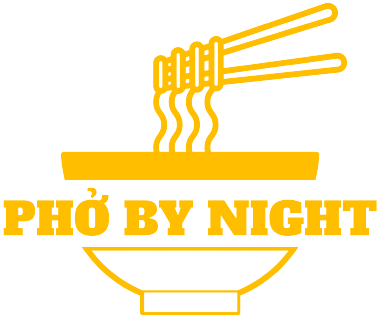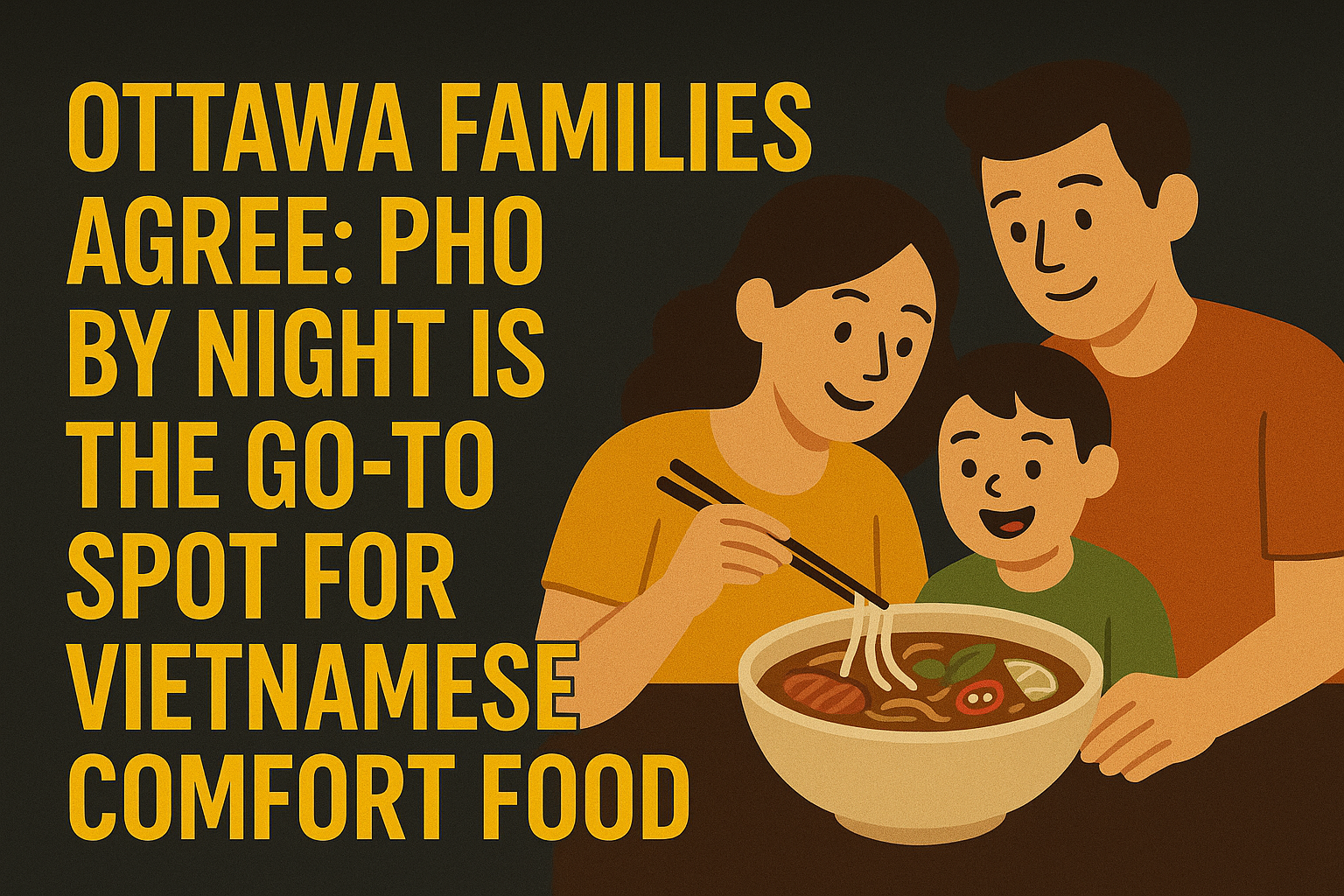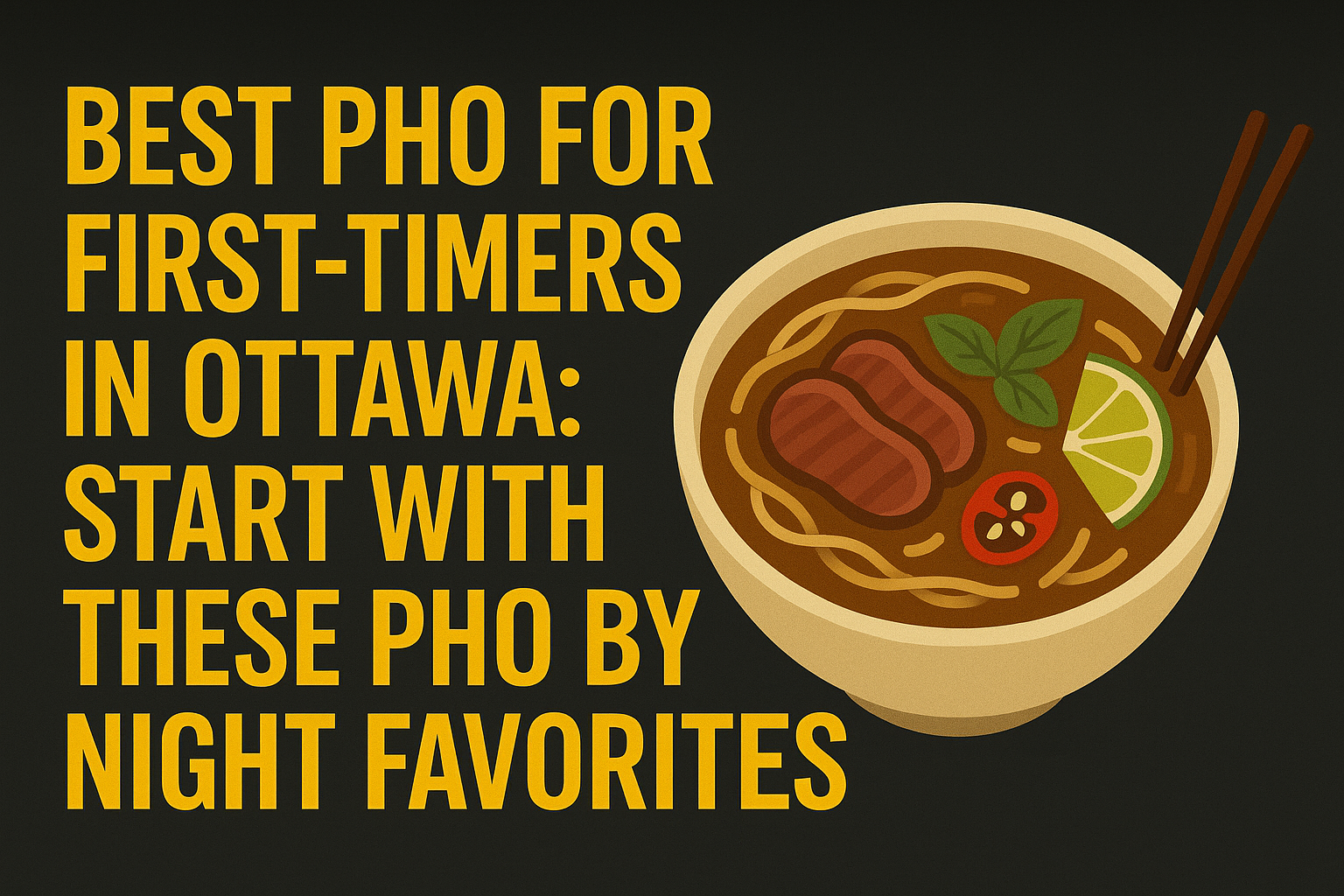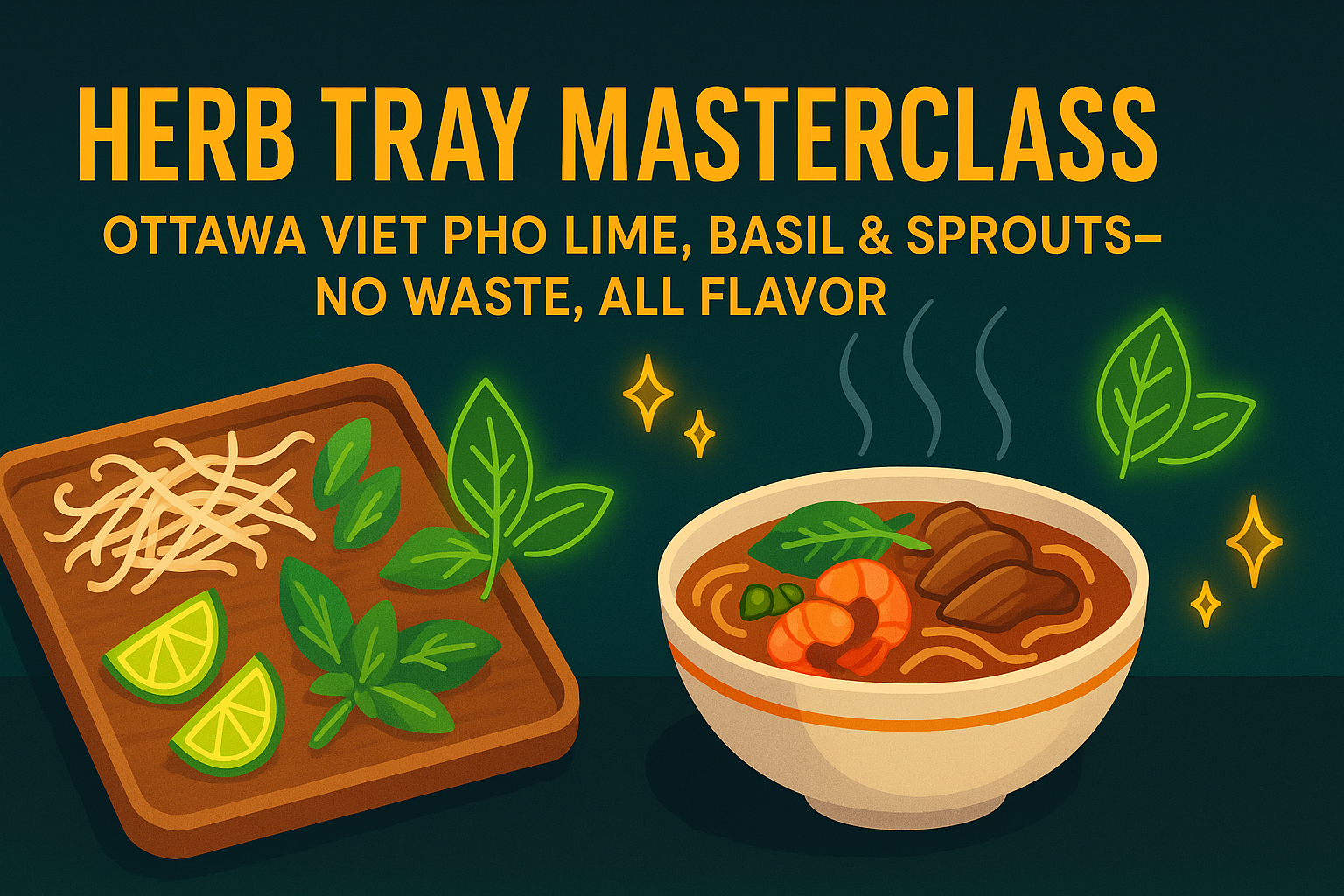
Herb Tray Masterclass: Ottawa Viet Pho Lime, Basil & Sprouts—No Waste, All Flavor
When a steaming bowl of Vietnamese pho arrives at your table in Ottawa, it’s not just the broth or noodles that make the dish shine—it’s the herb tray. Fresh lime wedges, fragrant Thai basil, and crisp bean sprouts are more than just garnish. They are essential to the flavor structure and dining experience of authentic Vietnamese pho. Mastering how to use these elements, store them, and reduce waste is the hallmark of a true pho enthusiast.
This comprehensive guide explores everything you need to know about the herb tray tradition, how to use each component to elevate your pho, smart storage and zero-waste techniques, and why these herbs are deeply rooted in Vietnamese culinary culture.
The Cultural Importance of the Herb Tray in Vietnamese Pho
In Vietnamese dining, the herb tray isn’t an optional extra—it’s a mandatory companion to pho. It reflects Vietnam’s emphasis on freshness, balance, and sensory engagement. Each element serves a role in bringing harmony to the bowl.
While some cuisines rely on sauces or condiments post-cooking, Vietnamese cuisine often relies on interactive garnishing at the table, letting diners personalize their flavor journey. This hands-on customization is one of the reasons pho is considered one of Vietnam’s most beloved dishes explore the origins of pho here.
Ottawa’s Vietnamese restaurants, such as Pho By Night, continue this tradition authentically—ensuring every diner gets their lime, basil, and sprouts in perfect balance.
Understanding Each Herb Tray Element
Lime: The Flavor Brightener
The sharp acidity of fresh lime is what cuts through the fatty richness of beef or chicken broth. A quick squeeze right before eating lifts the flavor profile and brings everything together.
- Use: Add lime last, just before eating, to preserve its bright flavor.
- Tip: For a more controlled flavor, squeeze the lime over your spoon and then stir into your broth to avoid seeds falling into your bowl.
Fresh lime also plays a role in food safety and digestion, thanks to its acidity, which can help neutralize certain bacteria and aid the digestive process (Government of Canada – Food Safety Tips).
Thai Basil: The Aromatic Layer
Unlike sweet Italian basil, Thai basil has a spicy, anise-like aroma that deepens the pho experience. When you tear and bruise the leaves before adding them to the bowl, essential oils are released, layering a floral spice note on top of the umami broth.
- Use: Add early to let the heat wilt the leaves slightly for infusion.
- Tip: Tear leaves by hand (not with a knife) to avoid bruising and oxidation.
For an in-depth guide on how different herbs and toppings can elevate your pho, explore The Art of Pho Garnishes.
Bean Sprouts: The Textural Contrast
Crunchy mung bean sprouts provide a fresh, crisp contrast to the silky noodles and broth. Some diners prefer them raw for maximum crunch, while others blanch them in the broth for a few seconds for a softer texture.
- Use: Add sprouts to your taste—raw for crunch, or submerged for tenderness.
- Tip: Add gradually while eating to keep some sprouts crisp for later bites.
Sprouts are also a nutritional powerhouse, rich in vitamins C and K, fiber, and plant protein, making pho not just delicious but nutritionally balanced.
How to Assemble the Perfect Herb Tray Experience
Step 1: Start with the Broth
Before adding any herbs, taste the broth. Authentic pho, like those served in Ottawa’s best pho spots, should be deeply flavorful on its own. This initial tasting helps you decide how much acidity, aroma, and crunch to layer on.
Step 2: Layer Aromatics
Add Thai basil first to allow it to infuse into the hot broth. Stir gently and breathe in—the aroma should bloom instantly.
Step 3: Add Texture
Next, toss in a handful of sprouts. Don’t dump the entire portion at once; adding in stages allows you to maintain texture control.
Step 4: Brighten with Lime
Finally, squeeze fresh lime just before your first bite. A balanced pho bowl should have a slight tang without overwhelming the broth.
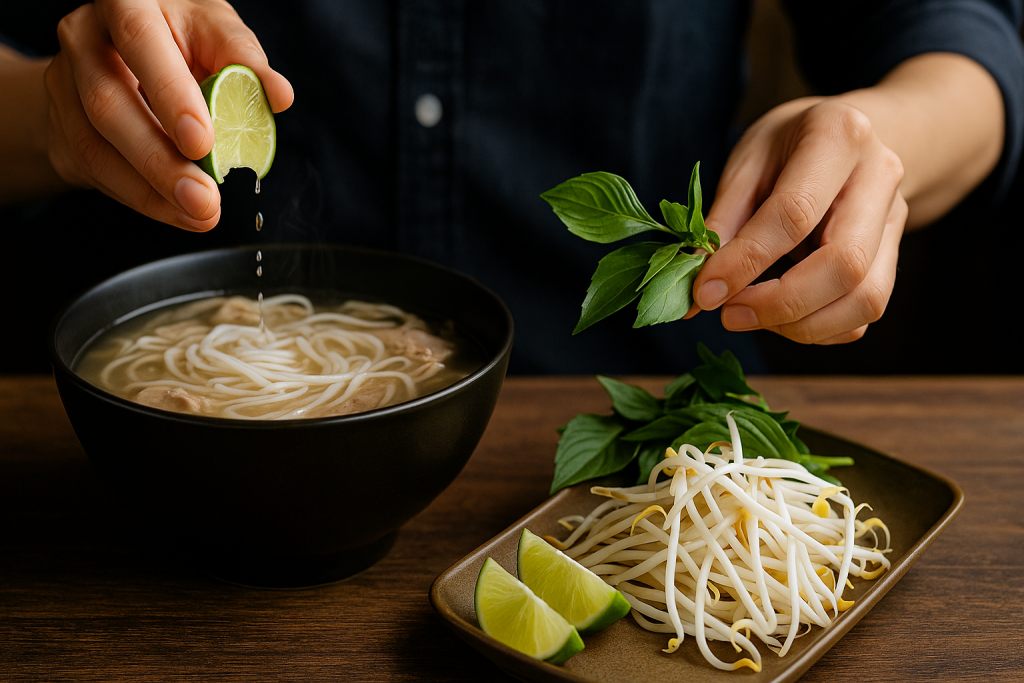
Zero-Waste Herb Tray Strategies for Home Pho
For Ottawa households enjoying pho at home—whether making from scratch or ordering takeout—herb waste can be a real issue. Here are practical methods to extend shelf life and eliminate waste.
Proper Storage Techniques
- Lime: Store whole, uncut limes at room temperature for up to a week. Once cut, wrap tightly and refrigerate.
- Thai Basil: Trim stems and place in a glass of water like flowers, loosely cover with a plastic bag, and keep at room temperature. Do not refrigerate—it turns black.
- Bean Sprouts: Submerge in a container of cold water, cover, and refrigerate. Change water daily to keep them fresh for up to 3–4 days.
Creative Uses for Leftovers
- Lime Rinds: Use in homemade cleaning solutions—citrus rinds are effective natural degreasers (U.S. Department of Agriculture Food Waste Reduction Tips).
- Basil Stems: Infuse in broths or teas for extra aroma.
- Bean Sprouts: Toss into stir-fries, omelets, or noodle salads the next day.
Ottawa’s Herb Tray Evolution: From Traditional to Innovative
Many Ottawa Vietnamese restaurants are now experimenting with local herb sourcing and sustainable practices. Seasonal Ontario-grown basil varieties, organic sprouts, and even reusable serving trays are being introduced to reduce single-use waste.
Some chefs are also incorporating less common garnishes like culantro (ngo gai), chili slices, and pickled garlic to offer more customization. This innovation parallels the rise of Vietnamese culinary fusion showcased in modern menus across Ottawa, blending heritage with sustainability.
Pairing Herbs with Different Pho Types
Different pho styles call for slightly different herb balances:
- Beef Pho (Phở Bò): Go heavier on basil and lime to balance the richness.
- Chicken Pho (Phở Gà): A lighter hand with lime enhances its delicate broth.
- Vegetarian/Vegan Pho: Use generous sprouts and lime to build complexity without meat fat.
If you’re curious about how pho compares to other Asian soups like ramen or udon, this comparison guide breaks down the differences beautifully.
Health Benefits of Traditional Pho Herbs
Beyond flavor, these herbs pack serious health benefits:
- Lime: Boosts vitamin C intake and aids digestion.
- Thai Basil: Contains antioxidants and has mild antimicrobial properties.
- Bean Sprouts: Low in calories, high in nutrients, and excellent for gut health.
For those exploring gluten-free or health-conscious pho options, Ottawa’s Vietnamese scene offers excellent alternatives. Read more in Is Vietnamese Food Healthy?.
A Step Toward Culinary Sustainability
Mastering the herb tray isn’t just about taste—it’s also about responsibility. By learning how to store, use, and reuse these ingredients, diners contribute to reducing food waste and supporting Ottawa’s growing sustainable food scene.
From lime to basil to sprouts, every part of the herb tray plays a role in building a perfect pho experience. The next time you sit down with a steaming bowl, approach your herb tray not as a side dish, but as an essential flavor toolkit.
Experience Authentic Pho in Ottawa
For the best pho herb tray experience, nothing beats dining at an authentic Vietnamese restaurant. Visit Pho By Night to explore their menu, or contact them for catering and private dining options.

